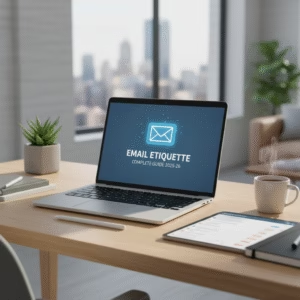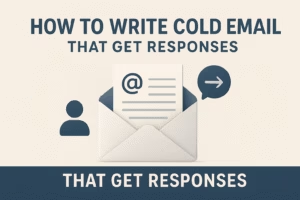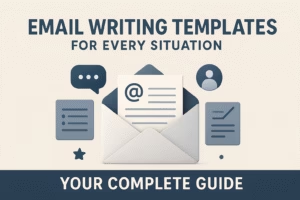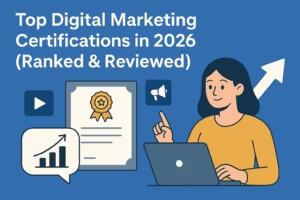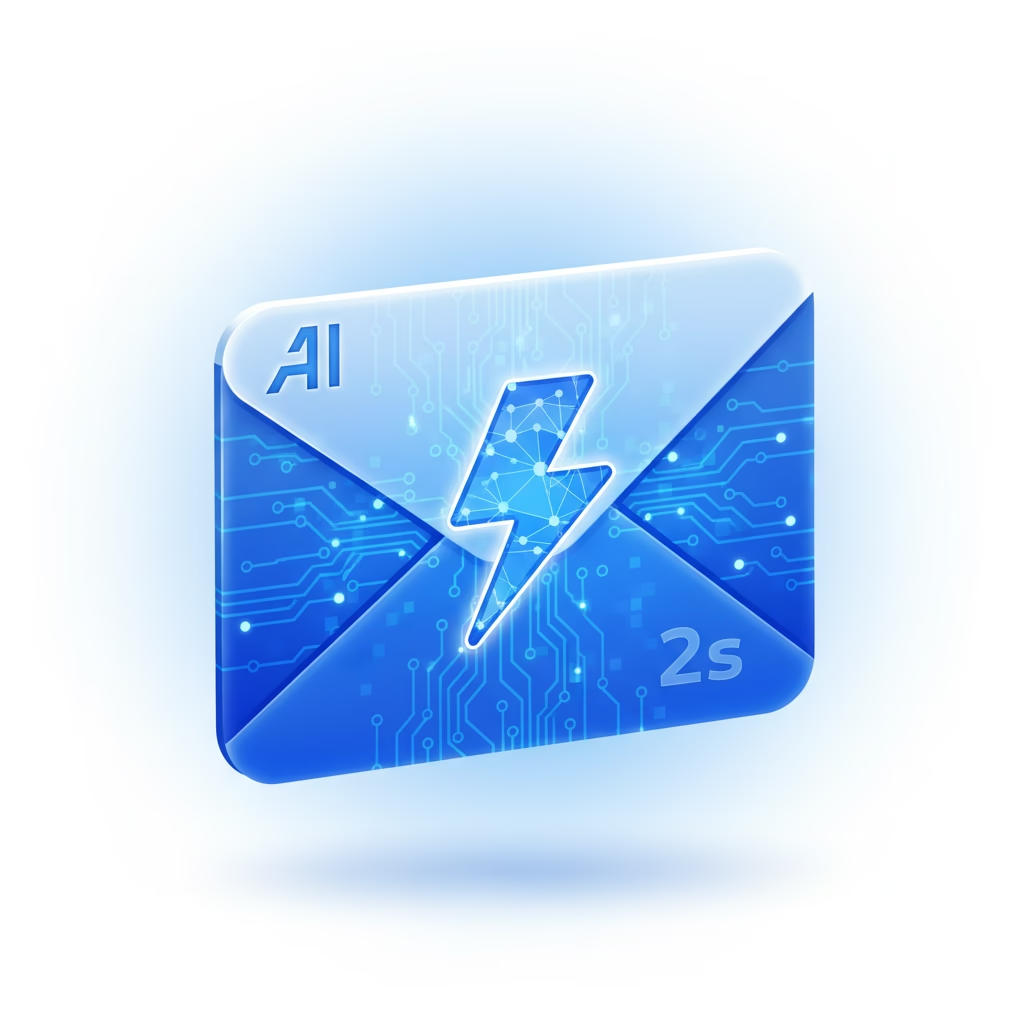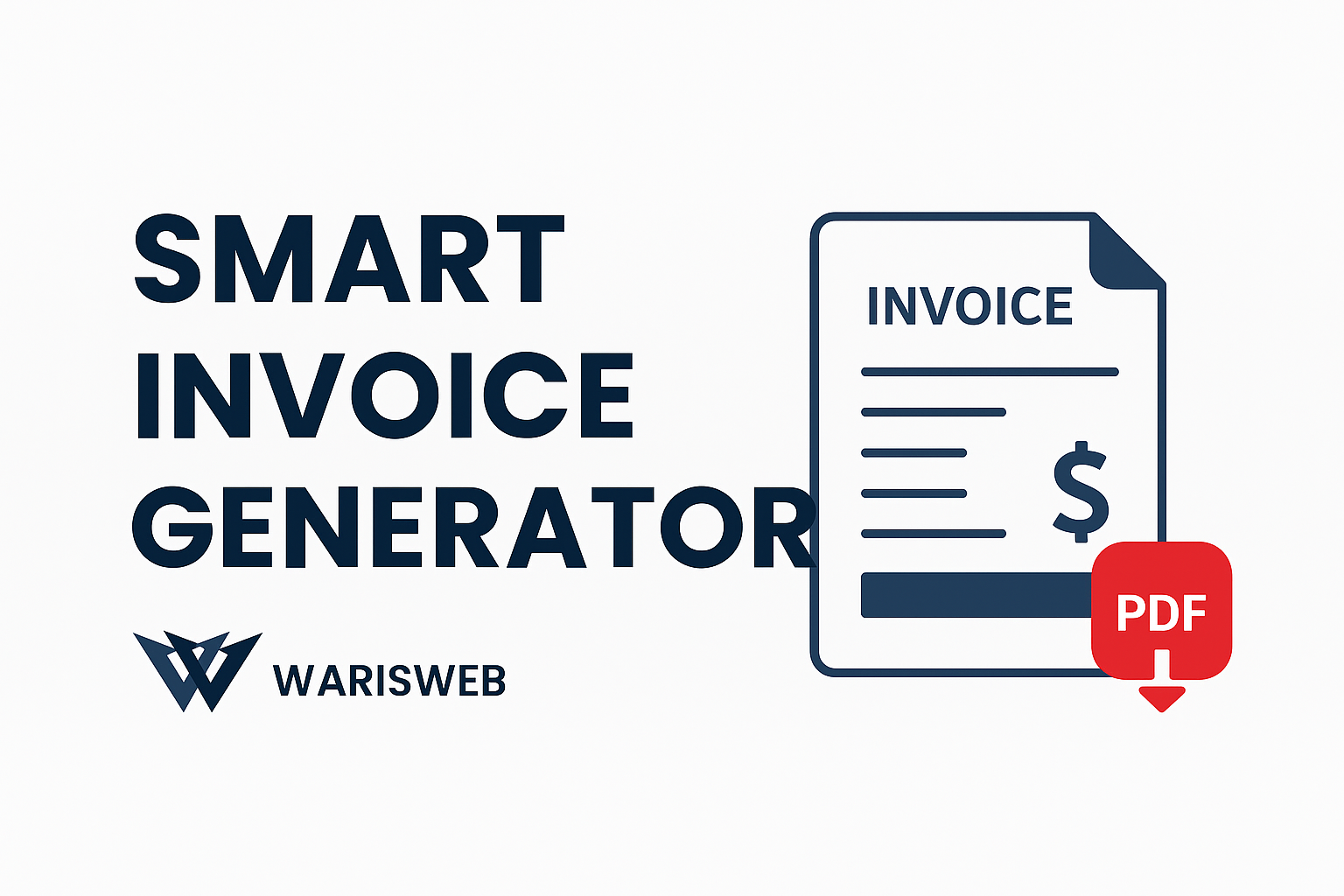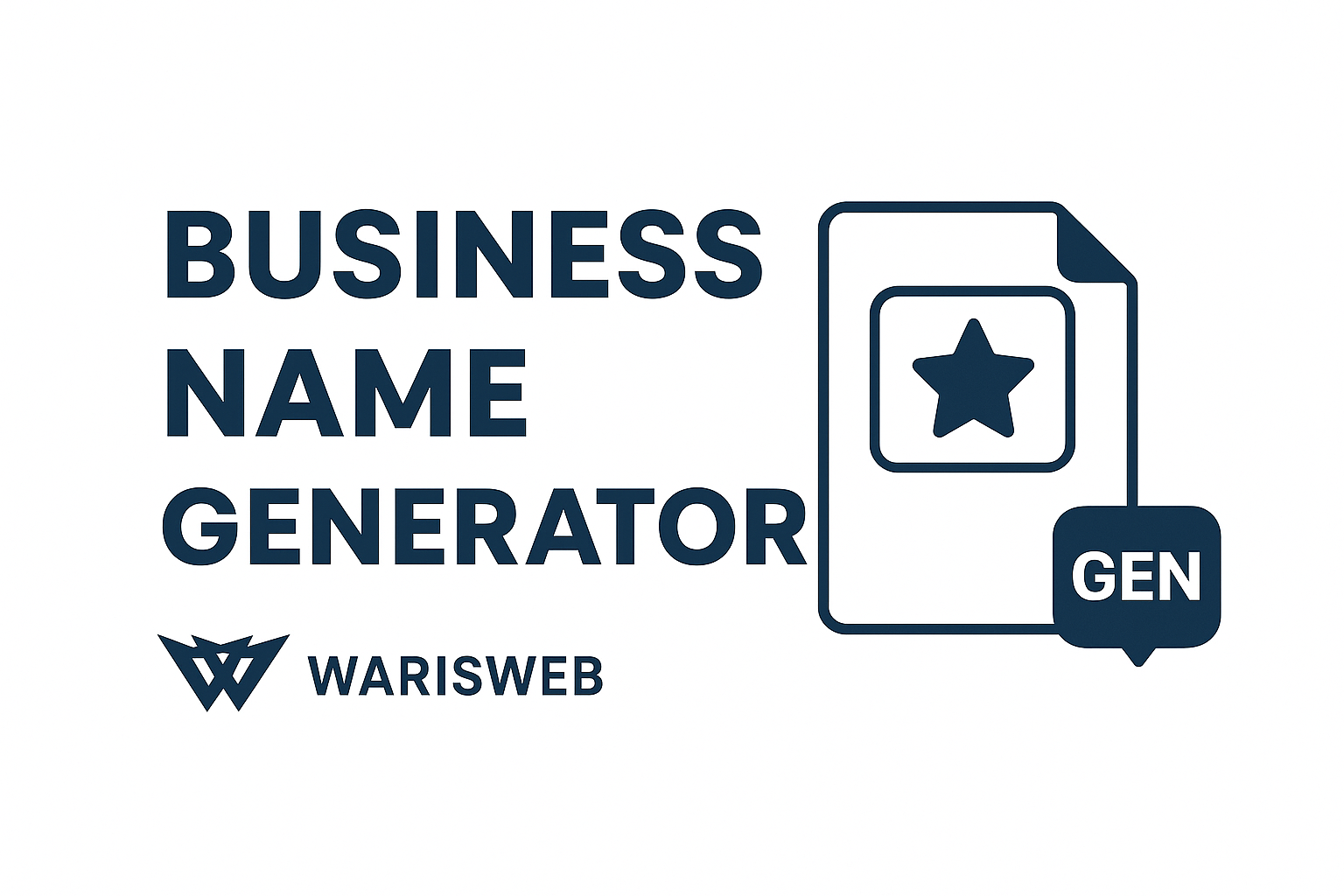Job Application Email Examples: The Complete Guide
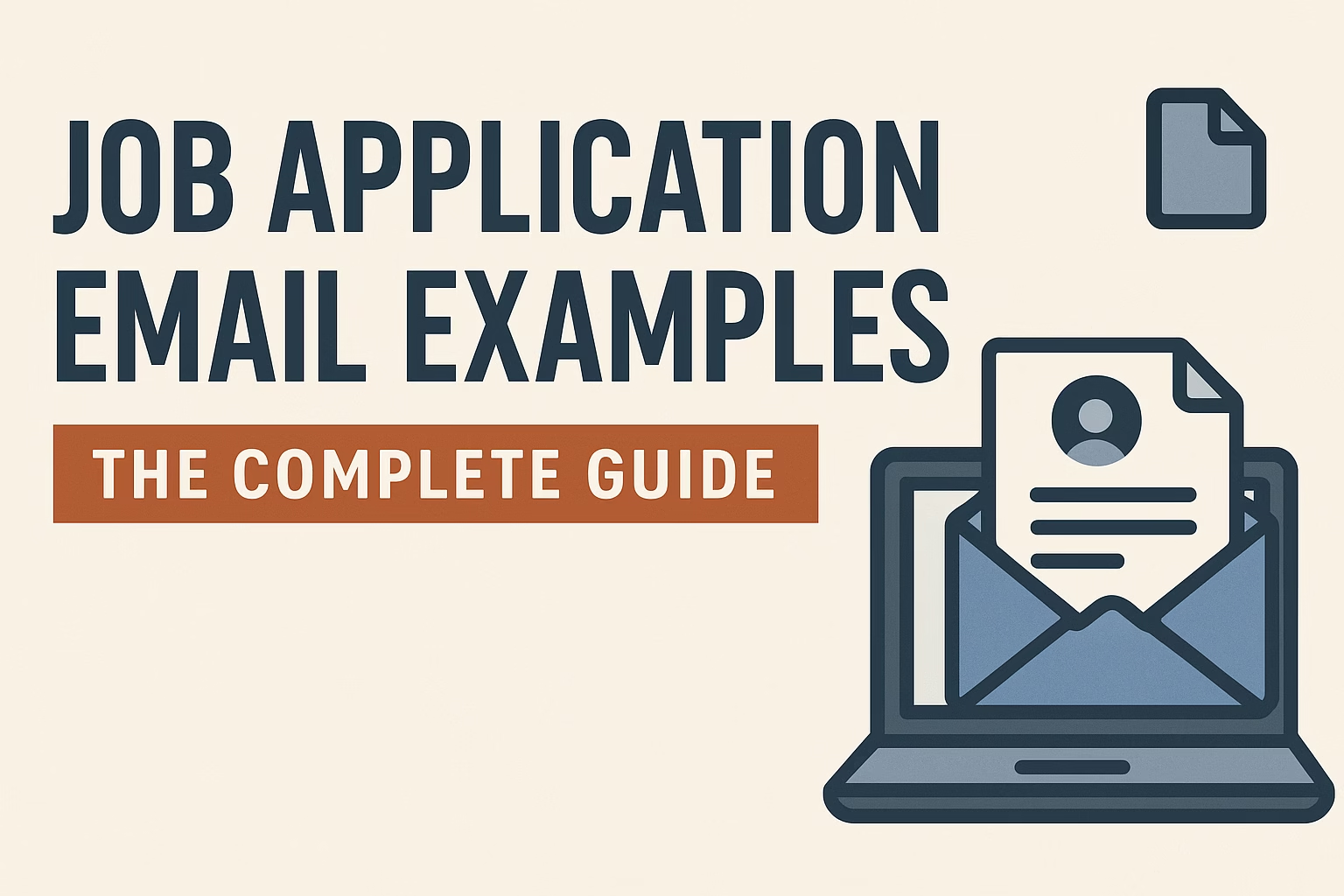
I still remember the first job application email I ever sent. I spent three hours crafting it, rewrote the opening paragraph seven times, and agonized over whether “Dear Hiring Manager” sounded too impersonal. Then I accidentally sent it without attaching my resume.
Yeah. That’s how my professional email career started.
The good news? That disaster taught me more about job application emails than any article ever could. And over the years, I’ve learned what actually works—not from career advice blogs, but from talking to hiring managers, recruiters, and people who’ve successfully landed jobs through email applications.
Here’s the uncomfortable truth: most job application emails are terrible. They’re either too long, too generic, or so stuffed with buzzwords that they sound like they were written by a robot trying to pass a Turing test.
This guide will show you exactly how to write job application emails that actually get read, remembered, and responded to. With real examples, insider tips, and the kind of honest advice you won’t find in sanitized career guides.
Why Your Job Application Email Actually Matters
Before we dive into templates and examples, let’s talk about reality.
Hiring managers are too busy to read long, rambling emails. They want short, straightforward messages that go straight to the bottom line and cover only essential information that compels them to review your case.
Your email is competing with dozens—sometimes hundreds—of other applications. The hiring manager might spend 10 seconds scanning your email before deciding whether to open your resume or move to the next candidate.
That’s not a lot of time to make an impression.
Your job application email needs to do three things:
- Get noticed in a crowded inbox
- Communicate your value quickly and clearly
- Make the hiring manager want to read your resume
Everything else is noise.
The Anatomy of a Job Application Email That Works
A professional email follows a simple but specific structure: subject line, greeting, body, and sign-off. Let’s break down each component with brutal honesty about what works and what doesn’t.
Subject Lines: Your Make-or-Break Moment
An inbox typically reveals about 60 characters of an email’s subject line, while on mobile it shows only 25 to 30 characters. That means you have roughly 8-10 words to make your email impossible to ignore.
What works:
Choose a subject line that’s short and specific, like “Marketing Coordinator – Jane Smith.”
The winning formula:
- Job Title – Your Full Name
- Application: [Job Title] – [Your Name]
- [Your Name] for [Job Title]
Examples that work:
- “Marketing Manager – Sarah Johnson”
- “Application: Senior Developer – Michael Chen”
- “Data Analyst Position – Lisa Rodriguez”
- “Software Engineer Role – James Kim”
If you have a reference or referral: “Referral From Jane Doe: Joe Smith, Resume for Junior Marketing Position”
If the job posting includes a reference number: “Application for [Job title], [reference number] – [Your name]”
What doesn’t work:
- “Hello” (Says nothing)
- “Job Application” (Which job? Whose application?)
- “Resume for Your Review” (Generic and boring)
- “Experienced Professional Seeking Opportunity” (Vague buzzword soup)
- “You need to see this resume!” (Desperate and unprofessional)
Pro tip: Include the word “Application”, your name, the job title, and the reference number if applicable. If the job posting specifies a subject line format, use it exactly. This shows you can follow instructions—a surprisingly rare quality.
The Greeting: Don’t Overthink It (But Get It Right)
When submitting a job application via email, it is highly recommended to address the hiring manager using their last name.
Best options:
- “Dear Mr. Smith,” (if you know the name and gender)
- “Dear Ms. Johnson,” (if you know the name and gender)
- “Dear Alex Thompson,” (if you’re unsure about gender)
- “Dear Hiring Manager,” (if you don’t know the name)
- “Dear [Department] Team,” (for team-based applications)
What to avoid:
- “To Whom It May Concern,” (Outdated and impersonal)
- “Hey there!” (Too casual for first contact)
- “Dear Sir/Madam,” (Sounds like a form letter from 1985)
- Starting with no greeting at all (Abrupt and rude)
Reality check: Spend 5 minutes on LinkedIn or the company website trying to find the hiring manager’s name. Personalization is everything when reaching out to hiring managers—ensure your message is highly personalized for each application by researching the company’s recent news, culture, and specific role requirements. If you can’t find it, “Dear Hiring Manager” is perfectly acceptable.
The Opening Paragraph: Hook Them Immediately
You have one sentence—maybe two—to capture attention. Don’t waste it.
Bad openings:
- “My name is John Smith and I am writing to apply for…” (They can see your name in the signature)
- “I was excited to see your job posting…” (Everyone is “excited”)
- “I am a highly motivated professional with excellent communication skills…” (Meaningless buzzwords)
Good openings:
- “I’m applying for the Marketing Manager position (Job ID #12345). With 5 years of experience growing SaaS companies and a track record of increasing conversion rates by 40%+, I believe I’d be a strong fit for your team.”
- “Your job posting for Senior Developer caught my attention because I’ve spent the past 3 years building exactly the kind of scalable e-commerce platforms you’re looking for.”
- “Jane Wilson suggested I reach out about the Data Analyst opening. I recently helped reduce customer churn by 25% through predictive modeling—work that aligns closely with your goals.”
What these do right:
- State the position clearly (no ambiguity)
- Include specific, quantifiable achievements
- Show relevance to the role
- Get straight to the point
The Body: Make Your Case (Briefly)
This is where most people lose the plot. They write their entire life story, list every job they’ve ever had, or regurgitate their entire resume in paragraph form.
Don’t do that.
Your body should be 2-3 short paragraphs that answer these questions:
- Why are you qualified?
- What value will you bring?
- Why this company/role specifically?
The formula:
Paragraph 1 (Qualifications): Your most relevant experience and achievements—quantified when possible.
Paragraph 2 (Value/Fit): How your skills solve their specific problems or align with their goals.
Paragraph 3 (Enthusiasm/Call-to-Action): Why you’re interested and what you want them to do next.
Keep each paragraph to 3-4 sentences maximum. If you’re writing more than 150 words total, you’re writing too much.
The Closing: Clear Next Steps
End with a clear call-to-action and professional sign-off.
Good closings:
- “I’ve attached my resume for your review. I’d welcome the opportunity to discuss how my experience can contribute to [Company]’s goals. Are you available for a brief call next week?”
- “I’d love to discuss this opportunity further. My resume is attached, and I’m available for an interview at your convenience.”
- “Thank you for considering my application. I’m excited about the possibility of joining [Company] and would be happy to provide any additional information you need.”
Sign-offs that work:
- “Best regards,”
- “Sincerely,”
- “Thank you,”
- “Best,”
Avoid:
- “Yours truly,” (Too formal)
- “Cheers,” (Too casual)
- “Respectfully,” (Sounds strange for job applications)
Real Job Application Email Examples
Let’s look at actual examples for different situations. These aren’t perfect—they’re realistic and effective.
Example 1: Standard Job Application
Subject: Application: Marketing Manager – Sarah Chen
Dear Ms. Rodriguez,
I'm applying for the Marketing Manager position (Ref #2847). With 6 years of experience in B2B SaaS marketing and a proven track record of increasing qualified leads by 150%, I believe I'd be a strong addition to your team.
In my current role at TechStart, I've managed a $500K marketing budget, rebuilt our content strategy from scratch, and increased organic traffic by 200% in 18 months. I'm particularly excited about CloudCorp's focus on data-driven marketing—I recently implemented a attribution model that improved our campaign ROI by 45%.
I've been following CloudCorp's growth over the past year, and I'm impressed by your recent expansion into enterprise markets. I'd love to bring my experience scaling B2B marketing programs to help accelerate that growth.
I've attached my resume and portfolio for your review. I'd welcome the opportunity to discuss how my experience aligns with your needs. Are you available for a brief call next week?
Thank you for considering my application.
Best regards,
Sarah Chen
(555) 123-4567
sarah.chen@email.com
linkedin.com/in/sarahchenWhy this works:
- Clear, specific subject line
- Opens with position and reference number
- Quantified achievements throughout
- Shows company research (recent expansion)
- Specific value proposition
- Clear call-to-action
- Professional but warm tone
- Under 200 words
Example 2: Application With Referral
Subject: Referral from Tom Martinez: Software Engineer – Alex Kim
Dear Hiring Team,
Tom Martinez suggested I reach out about the Senior Software Engineer position. I've been developing full-stack applications for 5 years, with a focus on the React and Node.js stack your team uses.
At DataFlow, I led the development of a real-time analytics platform that now processes 10 million events daily. I also reduced our API response times by 60% through database optimization—work that seems directly relevant to the performance challenges mentioned in your job posting.
Tom mentioned you're rebuilding your core infrastructure to handle scale. That's exactly the kind of challenge I'm looking for. I've attached my resume and GitHub profile where you can see examples of my work.
I'd love to learn more about the role and discuss how I can contribute to your team. Would you have time for a conversation this week or next?
Thank you,
Alex Kim
alex.kim@email.com
github.com/alexkim
(555) 987-6543Why this works:
- Leverages referral in subject line and opening
- Relevant technical experience
- Addresses specific company needs
- Links to portfolio/GitHub (smart for developers)
- Casual but professional tone
- Short and scannable
Example 3: Career Change Application
Subject: Application: UX Designer – Jennifer Lopez
Dear Mr. Thompson,
I'm applying for the UX Designer position at DesignCo. While my background is in graphic design, I've spent the past 18 months transitioning to UX through intensive coursework, freelance projects, and a complete redesign of our company's internal tools.
My design background gives me a strong foundation in visual hierarchy and user psychology. Recently, I redesigned our project management dashboard, which reduced task completion time by 30% and improved team satisfaction scores from 6.2 to 8.7 out of 10. I've also completed a UX Design certification from Google and built a portfolio of 5 client projects.
I'm drawn to DesignCo's user-centered approach and your focus on accessibility. Your case study on the healthcare portal redesign was particularly inspiring—that's exactly the kind of meaningful work I want to do.
I've attached my resume and portfolio. I'd love to discuss how my unique combination of visual design skills and growing UX expertise could benefit your team. Are you open to a 15-minute conversation?
Thank you for considering my application.
Best regards,
Jennifer Lopez
jennifer.lopez@email.com
Portfolio: jenniferlopez.design
(555) 234-5678Why this works:
- Addresses career change head-on
- Shows concrete transition efforts
- Quantifies impact in new role
- Demonstrates company research
- Portfolio link included
- Acknowledges unique position honestly
Example 4: Entry-Level/Recent Graduate
Subject: Marketing Coordinator Application – David Park
Dear Ms. Anderson,
I'm applying for the Marketing Coordinator position at GreenTech. As a recent marketing graduate with internship experience at two sustainability-focused companies, I'm excited about the opportunity to support your mission of making solar energy accessible.
During my internship at SolarPlus, I managed social media campaigns that increased engagement by 85% and generated 200+ qualified leads. I also created content for their blog, with my top post generating 10,000+ views and 150 newsletter signups. My coursework in data analytics prepared me to track campaign performance and optimize based on metrics.
I've been following GreenTech's recent campaign on residential solar adoption, and I love how you balance education with emotion in your messaging. I'd bring that same thoughtful approach to your marketing team.
My resume and a portfolio of my work samples are attached. I'd love to discuss how I can contribute to GreenTech's growth. Would you have 15 minutes for a conversation this week?
Thank you for your consideration.
Sincerely,
David Park
david.park@email.com
(555) 345-6789Why this works:
- Doesn’t apologize for being entry-level
- Highlights relevant internship experience
- Quantifies achievements even with limited experience
- Shows genuine interest in company mission
- Energetic but professional tone
- Work samples attached (smart move)
Example 5: Follow-Up After No Response
Subject: Following Up: Marketing Manager Application – Sarah Chen
Dear Ms. Rodriguez,
I wanted to follow up on my application for the Marketing Manager position (Ref #2847) that I submitted on October 1st. I understand you're likely reviewing many applications, and I don't want to clutter your inbox.
I remain very interested in this opportunity. My experience scaling B2B SaaS marketing programs aligns closely with CloudCorp's growth goals, and I believe I could make a significant impact on your team.
If you need any additional information or would like to schedule a brief conversation, I'm happy to accommodate your schedule.
Thank you for your time and consideration.
Best regards,
Sarah Chen
(555) 123-4567
sarah.chen@email.comWhy this works:
- References original application with date
- Polite and non-pushy tone
- Brief reminder of value
- Makes responding easy
- Respects their time
Common Job Application Email Mistakes (That Kill Your Chances)
Mistake 1: Generic, One-Size-Fits-All Emails
Nothing screams “I sent this to 50 companies” like an email that could apply to any company or any role.
Red flags:
- No company name mentioned
- Generic phrases like “your company” instead of the actual name
- No reference to the specific role or its requirements
- Zero indication you’ve researched the company
Fix: Spend 10 minutes researching each company. Mention something specific—a recent product launch, company values, a blog post, their mission. Show you actually care about this specific opportunity.
Mistake 2: Regurgitating Your Entire Resume
Your resume is attached. They can read it. Don’t write a novel-length email that recounts your entire career history.
Bad example: “I started my career in 2015 when I joined ABC Company as a Junior Analyst. There, I learned valuable skills in data analysis and project management. In 2017, I was promoted to Senior Analyst, where I managed a team of three people and worked on various projects including…” [continues for 6 more paragraphs]
Good example: “I’ve spent 5 years in data analytics, most recently leading a team that built predictive models reducing customer churn by 30%.”
Fix: Hit the highlights. Two to three achievements maximum. Make them count.
Mistake 3: Underselling or Overselling Yourself
There’s a balance between confidence and arrogance, between modesty and underselling yourself.
Underselling:
- “I know I don’t have much experience, but…”
- “I’m probably not qualified, but I thought I’d try anyway…”
- “I hope you’ll consider me despite…”
Overselling:
- “I’m the perfect candidate for this role.”
- “I guarantee I can solve all your problems.”
- “You’d be foolish not to hire me.”
Fix: State your qualifications clearly and confidently without apologizing or exaggerating. Let your achievements speak for themselves.
Mistake 4: Typos, Grammar Errors, and Wrong Names
This should be obvious, but I’ve seen applications addressed to the wrong company, wrong person, or wrong position. I’ve seen subject lines like “Apliation for Marekting Manger.”
These aren’t just typos—they signal carelessness.
Fix:
- Write your email in a word processor first (spell check!)
- Read it out loud
- Wait 10 minutes, then read it again
- Have someone else review it for important applications
- Double-check the company name, hiring manager’s name, and position title
Mistake 5: Inappropriate Email Addresses
If your email address is partygirl2000@email.com or beerlover87@email.com, create a professional one. First name + last name combinations are ideal.
Good: sarah.chen@email.com, sarahchen@email.com, s.chen@email.com Bad: coolsarah@email.com, sarahfan1995@email.com, sexysarah@email.com
Fix: Create a professional Gmail address if you don’t have one. It takes 5 minutes.
Mistake 6: Attachments Issues
Common problems:
- Mentioning attachments but forgetting to attach them
- Using unclear file names (“resume.pdf” instead of “Sarah_Chen_Resume.pdf”)
- Sending files in formats that won’t open (.pages, .numbers)
- Files that are too large (over 2-3 MB)
Fix:
- Attach files BEFORE writing your email (can’t forget them)
- Name files clearly: [YourName][Document][Date].pdf
- Use PDF format for resumes and cover letters
- Compress large files or use file-sharing links for portfolios
Special Situations: How to Handle Them
When You Don’t Meet All the Requirements
Here’s a secret: job postings are wish lists, not requirements checklists. If you meet 70% of the qualifications and have compensating strengths, apply anyway.
How to address it:
Don’t highlight what you’re missing. Focus on what you bring.
Instead of: “I know you want 5 years of experience and I only have 3…”
Write: “I’ve spent 3 years developing the exact skills your role requires, including [specific relevant achievements].”
When You’re Overqualified
Being overqualified can actually hurt you—employers worry you’ll get bored or leave quickly.
How to address it:
Explain why this role makes sense for you specifically:
“I’m intentionally seeking a role where I can focus deeply on [specific aspect] rather than managing large teams. This position aligns perfectly with that goal and my skills in [relevant areas].”
When There’s a Gap in Your Employment
Don’t lie about gaps, but don’t dwell on them either.
How to address it:
Brief, honest, forward-looking:
“After taking time off for [personal reasons/family care/health], I’m excited to return to my career in [field]. During that time, I [any relevant activities—freelancing, volunteering, courses].”
When You’re Applying Speculatively (No Job Posting)
Reach out directly to the hiring manager or department head.
Template:
Subject: Inquiry: Marketing Opportunities at [Company]
Dear [Name],
I'm a marketing professional with 7 years of experience in the tech industry, specializing in content strategy and demand generation. I'm reaching out because I've been following [Company]'s growth and am impressed by [specific thing about their work].
While I don't see any open marketing positions listed, I wanted to introduce myself in case any opportunities arise in the near future. I've helped companies like [Example] achieve [specific results], and I believe I could bring similar value to your team.
I've attached my resume for your reference. If there's a good time to connect briefly, I'd love to learn more about your team's goals and challenges.
Thank you for your time.
Best regards,
[Your Name]The Technical Details That Matter
When to Send Your Application
Timing can affect your chances of being seen:
Best times:
- Tuesday through Thursday
- Between 6-10 AM (lands in inbox when they start their day)
- Early in the application period (if there’s a posting deadline)
Worst times:
- Late Friday afternoons (gets buried over the weekend)
- Monday mornings (inbox overwhelm)
- Late at night (might seem desperate or like poor time management)
Reality check: This matters less than content quality. A great email sent on Friday afternoon beats a mediocre one sent Tuesday morning.
Email Format and Professionalism
- Use a professional email font (Arial, Calibri, Times New Roman)
- Don’t use colors, emojis, or excessive formatting
- Keep your signature simple (name, phone, email, LinkedIn)
- Make sure your email signature doesn’t include inspirational quotes or images
Following Up: When and How
If you haven’t heard back:
- Wait 1-2 weeks after applying before following up
- Send one follow-up maximum (unless they indicate a different timeline)
- Keep it brief (3-4 sentences)
- Add value if possible (new achievement, additional relevant experience)
More than one follow-up can seem desperate or annoying.
When You Need Help: The Role of Tools
Look, writing job application emails is stressful. You’re trying to sell yourself without sounding arrogant, show enthusiasm without seeming desperate, and stand out without being weird. It’s a tough balance.
Sometimes you need a second opinion. Sometimes you need help with tone, grammar, or just making sure you’re putting your best foot forward.
This is where tools like the Email Writing Assistant can help. Think of it as having a career advisor review your email before you hit send.
When these tools are helpful:
- Checking tone (are you too casual? too formal?)
- Catching grammar and spelling errors you missed
- Restructuring rambling sentences into clear statements
- Finding more professional ways to phrase things
- Building confidence when you’re not sure about your writing
What tools can’t do:
- Research the company for you
- Know which achievements to highlight
- Create genuine enthusiasm
- Replace thoughtful personalization
- Make up for not meeting basic qualifications
Use tools to polish and refine, not to generate generic applications. Your genuine voice and specific qualifications are what get you interviews—tools just help you communicate them more clearly.
The Bottom Line: Quality Over Quantity
Here’s the advice most career guides won’t give you: sending fewer, highly customized applications will get you better results than blasting out 100 generic emails.
A truly personalized application takes 20-30 minutes when you include research. That feels like a lot. But if it increases your response rate from 2% to 20%, the math changes completely.
Focus on:
- Roles you’re genuinely qualified for and interested in
- Companies where you’d actually want to work
- Positions where your specific skills solve their specific problems
Your job application email should:
- Be clear and concise (under 200 words)
- Highlight 2-3 specific, quantified achievements
- Show genuine interest in the specific company/role
- Make it easy for them to take the next step
- Sound like an actual human wrote it
Most people overthink the format and underthink the content. Get the content right—your qualifications, achievements, and genuine interest—and the format matters much less than you think.
Now stop overthinking it and start applying. You’ve got this.
Need help crafting the perfect job application email? The Email Writing Assistant or ChatGPT can help you refine your message, check your tone, and make sure you’re presenting yourself in the best possible light. Think of it as your personal application editor—there when you need a confidence boost or a second pair of eyes.
What’s your biggest challenge with job application emails? Share in the comments—your question might help someone else facing the same struggle.
Share This Post:
Our Free Online Tools
Transform Your Thoughts into Polished Emails With ai
Previous Articles:
